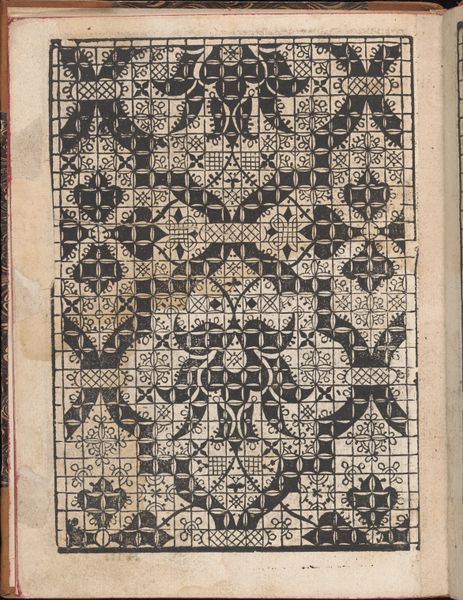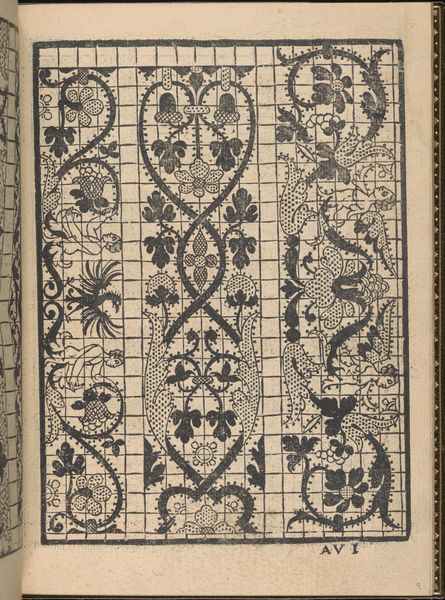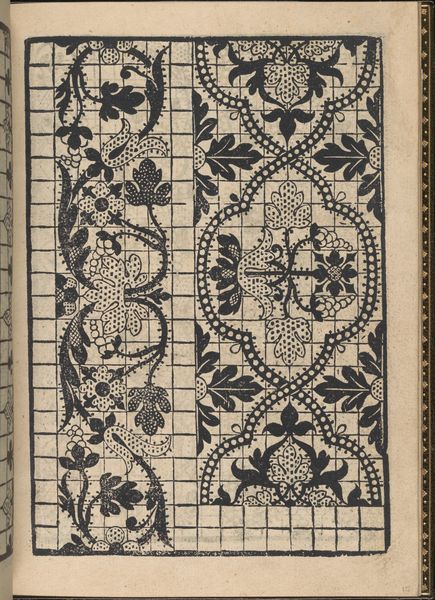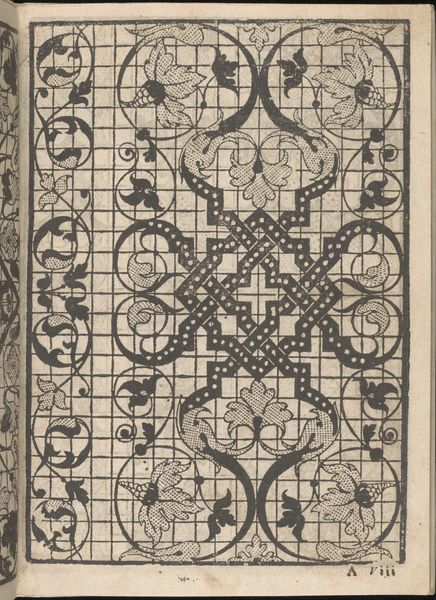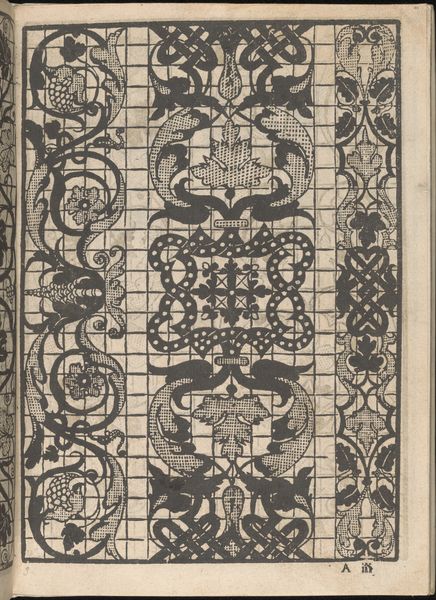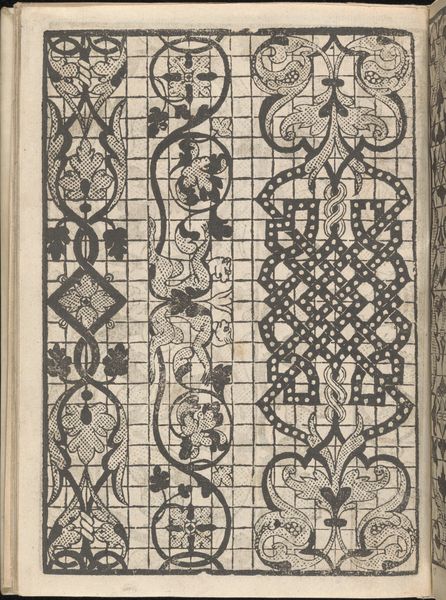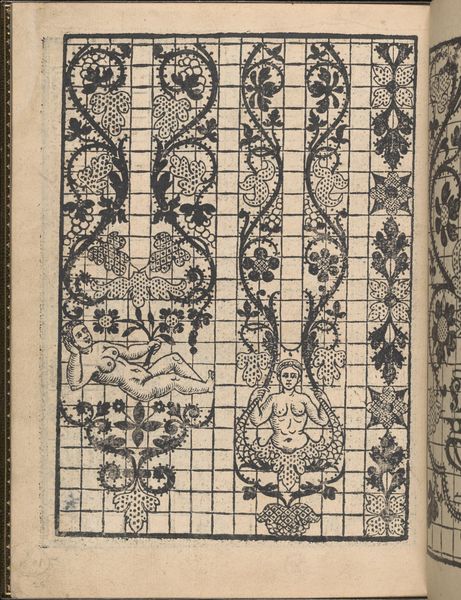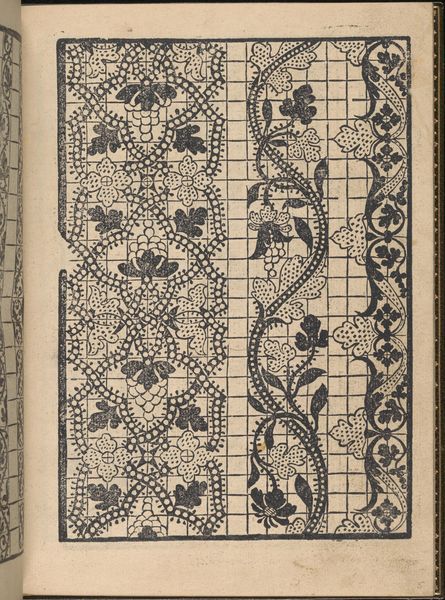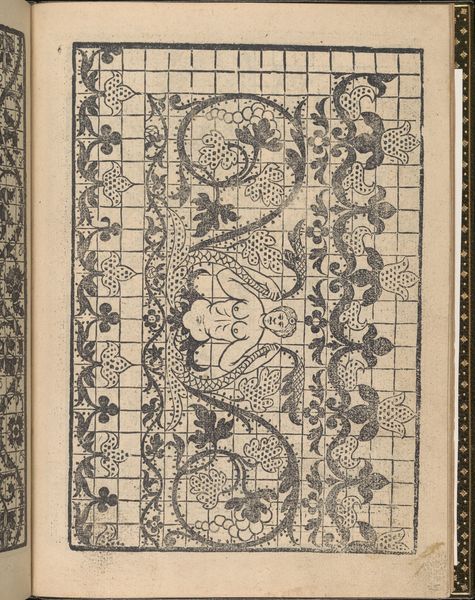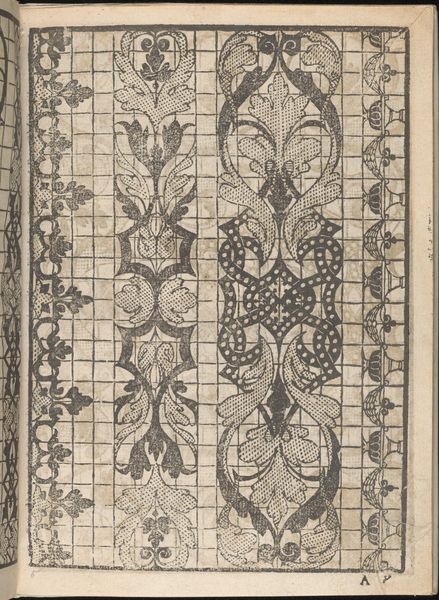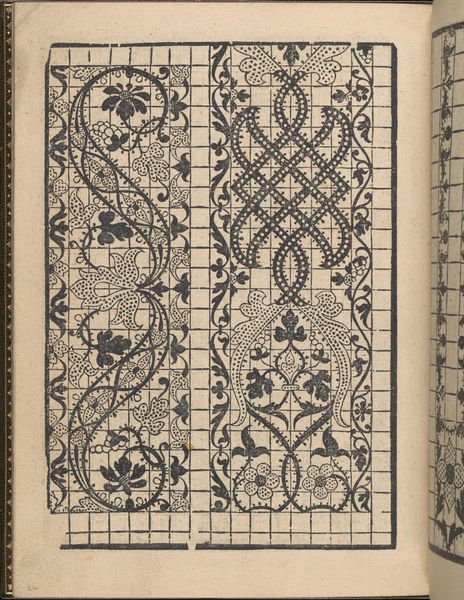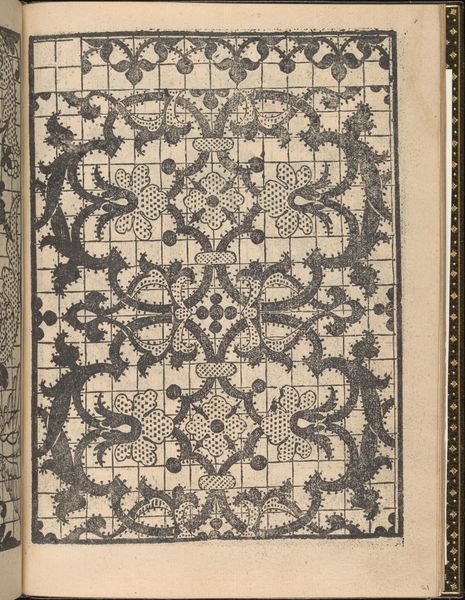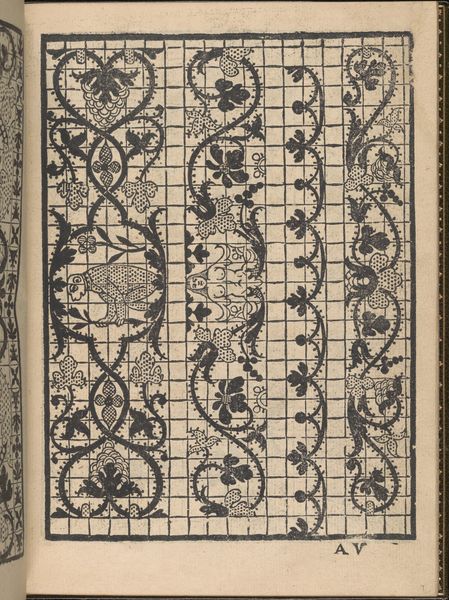
La Gloria et l'Honore di Ponti Tagliati, E Ponti in Aere, page 7 (verso) 1556
0:00
0:00
drawing, print, engraving
#
drawing
# print
#
pattern
#
11_renaissance
#
geometric
#
decorative-art
#
engraving
Dimensions: Overall: 8 1/4 x 6 1/8 in. (21 x 15.5 cm)
Copyright: Public Domain
Curator: At first glance, it has such an ethereal presence! A seemingly simple composition of black ink on what is now aged paper gives this piece an undeniable gravitas. What do you see? Editor: Indeed, an excellent choice. This is page 7 from “La Gloria et l'Honore di Ponti Tagliati, E Ponti in Aere”, a decorative engraving from 1556 by Matteo Pagano. It now resides at the Metropolitan Museum of Art. But stepping back, its appeal reaches beyond simple aesthetics. During the Renaissance, patterns in artwork were like accessible, repeatable anthems to empowerment—a claim of status for those excluded from art's conventional subjects of beauty, wealth, or war. Curator: An anthem is such an apt way to describe it. The visual rhythms have the immediate impact of a striking logo, one carefully designed to evoke very specific feelings around beauty and luxury for very particular Renaissance eyes. It reads to me as something radical and progressive, to be simple yet strong at a time when social divisions where being harshly reinforced in life as well as in art. Editor: Precisely! These symbols offered something accessible and familiar. Floral motifs represented nature’s bounty. Geometric elements embodied divine order. Even the dots could be viewed as symbolic; consider they are visually connected to each other, but stand apart on their own. Woven together in such patterns, they invited those who used the work to associate their homes with these concepts and sentiments, bringing elements of elevated identity to their most private spheres. Curator: And let’s think about the gendered space and socioeconomics, as that context matters when discussing power in visual display. Domestic arts in early modern Europe was deeply connected with women and the middle classes. Pagano’s repeating designs acted as a signifier to status that spoke quietly in patterns on material that many people used everyday to reflect good taste, and a refined understanding of self and one’s own image. The artist acted in a way like a commercial disruptor for the status quo. Editor: Very astute observation, to be sure. It shows the power of visual culture across time, even today. The choices, presentation, and context surrounding even simple imagery create meanings and social hierarchies we live with everyday. Curator: Indeed, contemplating this piece has given me a refreshed understanding of how social change moves, almost unseen, through society by influencing our aesthetics. Thank you. Editor: And thank you. It has reminded me of how crucial it is to understand what images were designed to elicit in the hearts and minds of their earliest audience.
Comments
No comments
Be the first to comment and join the conversation on the ultimate creative platform.
